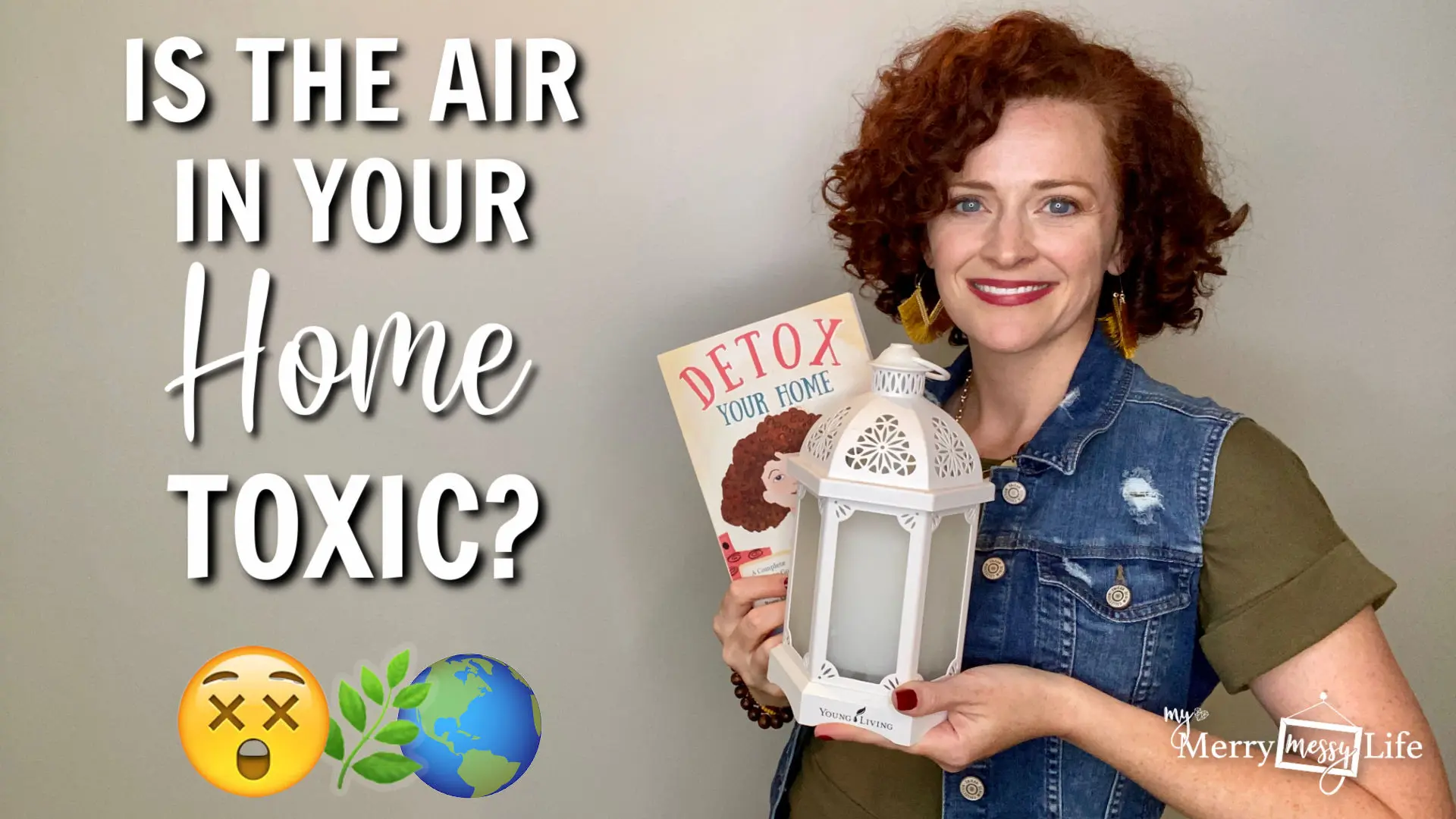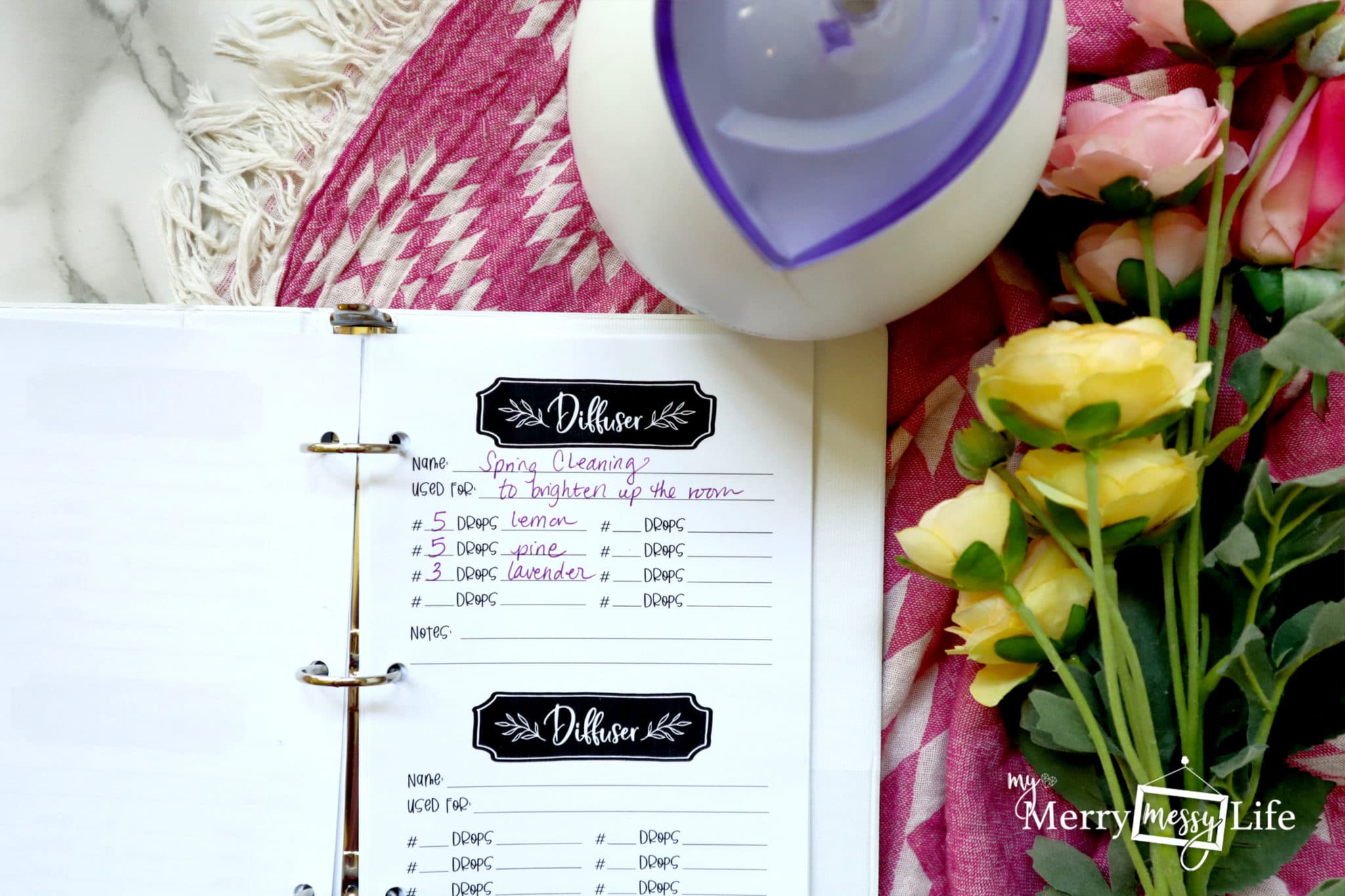How to Reduce Indoor Air Pollution and Why You Should
Did you know that you could actually have indoor air pollution inside your own home? Crazy, right? Air quality is not just a problem in congested cities anymore, it's now an issue in our humble sanctuaries. We now need to do all we can to make the air in our homes cleaner and safer, and thankfully, it's easy to do!

Air Pollution Isn't Just in Cities Anymore
Most of us think of air pollution as something that comes from crowded, congested big cities. And that used to one of the only places you'd be exposed to toxic air.
But times have changed as we have more airborne toxins inside our homes than ever before, causing air pollution in homes. This is due to the fumes (Volatile Oragnic Compounds, or VOC's) released by furniture, paint, mattresses, carpets, rugs, flooring, building materials, cleaning products, laundry products and even beauty products!
Top Offenders for Indoor Air Pollution
1 – Artificial Fragrances
I love to make my home smell amazing, but when I used to use scented candles, plug-ins, and air fresheners, I found they would always give me a headache, make me feel confused, and even made my nose burn!
The term “artificial fragrance” stands for more than 3,000 chemicals and companies do not have to disclose which chemicals are included. So there’s no way of knowing if the chemicals in the product are safe for our health or not.
I don’t know about you, but I’d rather be safe than sorry and now that I use essential oils, it’s SO easy to put a few drops in my diffuser or make a room spray (like this recipe).
Car Air Fresheners Are Really Yucky
Anytime I get into an Uber or Lyft with a scented pine tree hanging from the rear-view mirror I cringe because I know I'll likely leave the car with a headache. The cleaning and laundry aisles of stores also really get to me and start to make me feel sick.
What I found is that these fragrance-filled products are very toxic to our health.
The Air Inside Our Homes is 2.5 Times More Polluted than the Air Outside!
The Environmental Protection Agency reports that the air inside the typical American home is 2-5 times more polluted than the air immediately outside – and in some extreme cases, 100 times more contaminated. Chemicals within our homes contribute to indoor air pollution, especially ones containing fragrances, chlorine bleach and ammonia. (source)
In fact, artifical fragrances so bad for our health that they're being dubbed the new second-hand smoke!
Toxins are Even in Perfumes!
In our church choir, they banned perfume and cologne because it was making so many people sick. I knew something must be up so I started looking into it.
According to this article from Scientific American, perfumes contain petrochemcials, which are chemicals derived from petroleum or natural gas, and many other hazardous synthetic chemicals. Take one of my old favorite perfumes – J’Adore by Christian Dior. The EWG (Environmental Working Group) gives it a 7 rating out of 10 for toxicity, with moderate concerns for cancer and high concerns for endocrine disruption (which effects breast cancer, thyroid, hormones and more). Eek, not good!
According to this article from the EWG,
A new analysis reveals that top-selling fragrance products—from Britney Spears’ Curious and Hannah Montana Secret Celebrity to Calvin Klein Eternity and Abercrombie & Fitch Fierce —contain a dozen or more secret chemicals not listed on labels, multiple chemicals that can trigger allergic reactions or disrupt hormones, and many substances that have not been assessed for safety by the beauty industry’s self-policing review panels.
Sorry, more bad news. But I promise I won't keep it all doom and gloom!
Second-Hand Scents Can Even Affect a Fetus!
And I learned that second-hand scents are also harmful. Some of the chemicals even make their way into fat tissue, the umbilical cords of developing fetuses, and breast milk – NOT good for our babies. To me the scariest part is companies do not have to divulge all of the ingredients in their perfumes to protect their trade secrets, so consumers cannot find out what exactly they are getting into.
2 – Phthalates
Artificial fragrances disperse particles of formaldehyde and phthalates (thy-lates) into the air. Phthalates are small particles of plastic that are used to bind the artificial fragrance molecules together. We then breathe in those tiny particles of plastic and they get into our nose and lungs – yikes!
They cause an allergic reaction inside our bodies – you'll notice you might start sneezing, have an itchy nose, watery eyes, a cough, brain fog or confusion, headaches and even migraines.
3 – Formaldehyde
Formaldehyde is a preservative that you likely know as the one that's used to embalm the dead. It is also widely used in cleaning, laundry, bath, body and beauty products. Building materials, carpets, rugs, pressed wood furniture, shelving and upholstery also contain formaldehyde.
It is a known carcinogen – it can also cause skin, nose and throat irritation, nausea, and difficulty breathing. High concentrations may trigger asthma attacks in people with asthma, cause cancer in animals, and may cause cancer in people as well! (source)
4 – Volatile Organic Compounds (VOC's)
In addition to artificial fragrances, Volatile Organic Compounds are also released from products that contain petroleum, plastics and glue. Things like mattresses, carpets, rugs, building materials, hardwood floors, vinyl floors, paint, cleaning products, laundry products, and the list goes on.
Exposure to Toxic Chemicals is Cumulative
The effects of this indoor air pollution are cumulative, or build up over time. Symptoms of pollution might first present as headaches and nose irritation, then could lead to allergies, chronic colds, respiratory infections, autoimmune diseases and even cancer!
Impossible to Steer Clear of Indoor Air Pollution
Unless you go live in a cave in the middle of a mountain in Montana, you're going to be exposed to some toxins no matter what you do. It's just not possible to steer clear of them all together if you want to live in the modern world!
Yikes, I know this all sounds doom and gloom, but there are easy, cheap and affordable solutions to fix the problem.

How to Reduce Indoor Air Pollution
Ahhh! Where's the good news! Here it is! So what can we do to reduce the amount of indoor air pollution? Well there are several things:
- Get some room air filters (ones with ionizers are the best)
- Open the windows in your home as often as you can
- Change the air filters in your home 3-4 times a year, instead of just once or twice a year (here's one for allergy sufferers)
- Remove cleaning and laundry products that aren't natural, replace them with natural ones (check here for my natural cleaning and natural laundry recipes!)
- Use low-VOC paint and ventilate the house well when you do paint
- Remove paint cans and solvents from your home as much as you can – they do omit fumes from the cans into the home
- Diffuse pure essential oils to help purify the air
Diffuser Blends for the Whole Year Round
Here's a list of the diffuser recipe posts I have for the whole year round! Make your home smell amazing no matter what the season.
